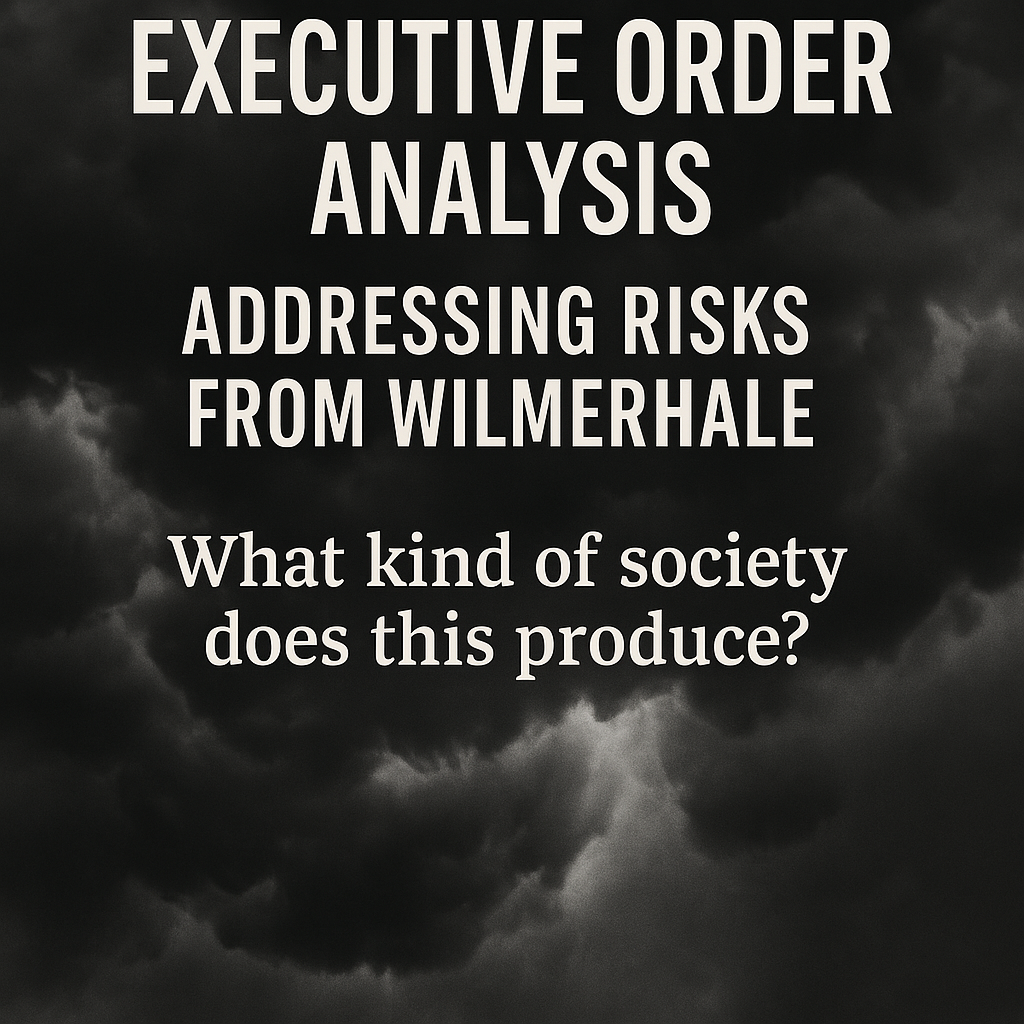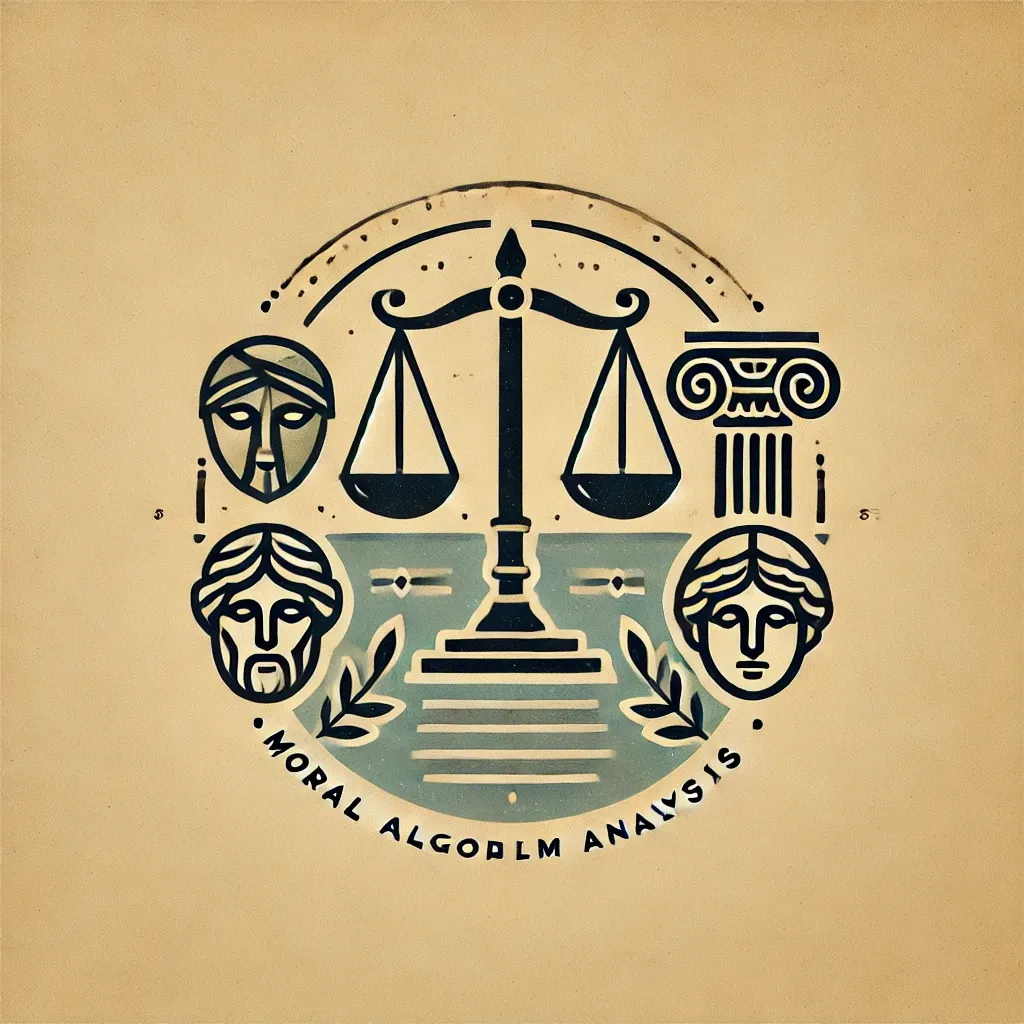Executive Overreach and the Erosion of Legal Independence
Trump’s March 27 EO targets law firm WilmerHale, citing political bias and national security risks. This analysis finds the order undermines legal independence, weaponizes government power, and fails ethical, civic, and economic justice tests. What kind of society does this produce?

A Layered Spiral Analysis of the March 27, 2025 Executive Order on WilmerHale
By [Author Name]
SUMMARY
On March 27, 2025, President Donald J. Trump issued an Executive Order targeting the law firm WilmerHale, citing alleged threats to national security, public safety, and constitutional principles. This analysis applies the Layered Spiral Framework grounded in the Trivium (Grammar, Logic, Rhetoric) and ethical, civic-economic lenses—including John Adams' Moral Algorithm, Rawls' Veil of Ignorance, Aristotle's Virtue Ethics, and modern frameworks such as Chartalism, the Cantillon Effect, Ostrom's Commons Governance, and Public Choice Theory—to explore the implications of this order.
I. GRAMMAR – DEFINING THE ORDER
This Executive Order (EO) directs federal agencies to:
- Suspend security clearances held by WilmerHale personnel.
- Terminate or review all federal contracts involving WilmerHale or entities doing business with the firm.
- Restrict access to federal buildings and employment opportunities for WilmerHale employees.
The EO accuses WilmerHale of partisan legal activity, racial discrimination through diversity targets, and undermining American elections and security. It frames the firm's pro bono efforts and former affiliations with Robert Mueller and others as justification for federal retaliation.
II. LOGIC – SYSTEMS, CONSEQUENCES, CONTRADICTIONS
Systemic Function
The EO operates through executive authority over federal security, contracting, and staffing. It tasks the DOJ, DNI, OMB, and agency heads with implementation.
Consequences
- Chills pro bono legal work in civil rights, immigration, and election integrity.
- Politicizes federal contracts and national security clearances.
- Deters law firms from hiring or representing individuals perceived as political threats.
Contradictions
- Claims to oppose "weaponization" of government but engages in it by targeting legal opposition.
- Condemns race-based hiring while potentially violating due process and equal protection through blanket assumptions.
- Uses national security as a justification without public evidence or judicial review.
III. RHETORIC – ETHICAL EVALUATION
John Adams' Moral Algorithm
Does this serve the common good over private interest?
No. The EO prioritizes partisan revenge over public welfare, using state mechanisms to suppress opposition.
Rawls' Veil of Ignorance
Would this be fair if you didn’t know your role in society?
No. The EO is unjust if viewed from a neutral standpoint. It threatens anyone offering legal support to disfavored groups or causes.
Aristotle’s Virtue Ethics
Does this cultivate virtue or enable vice?
No. It cultivates fear, loyalty to political power, and retribution over justice, courage, and civic integrity.
IV. CIVIC-ECONOMIC FRAMEWORKS
Chartalism / MMT
Federal funds are not merely budgetary tools—they allocate real resources. This EO redirects resources away from independent legal institutions and toward ideologically aligned actors.
Cantillon Effect
Access to federal dollars becomes skewed, increasing inequality and concentrating influence among political loyalists.
Ostrom’s Commons
Suppresses legal commons—shared civic institutions like pro bono legal work—by punishing dissent.
Public Choice Theory
Reveals executive actors using public policy for self-interest and retaliation rather than neutral governance.
Subsidiarity Principle
Overcentralizes authority in the Executive instead of empowering local or independent legal actors.
Buckminster Fuller's Anticipatory Design
Fails to build future-resilient systems. Instead of improving access to justice, the EO targets nodes of resistance, weakening institutional adaptability.
Donella Meadows’ Leverage Points
Targets a high-leverage node—freedom to self-organize legal defense—creating long-term systemic fragility and potential backlash.
V. WHAT KIND OF SOCIETY DOES THIS PRODUCE?
A society where:
- Legal independence is undermined by political loyalty tests.
- Public interest law is stifled.
- Government power is wielded for retribution rather than protection.
This trajectory is incompatible with a constitutional republic founded on liberty, justice, and civic participation.
CONCLUSION
The March 27 Executive Order does not merely restrict a law firm—it attacks a fundamental principle of democratic society: the right to legal advocacy free from government retaliation. Evaluated through ethical, legal, and economic frameworks, it fails to meet the standards of justice, fairness, and virtue. It sets a dangerous precedent where power, not principle, defines public policy.
To protect the Republic, we must ask:
“What kind of society does this produce—and is that the society we want to live in?”
